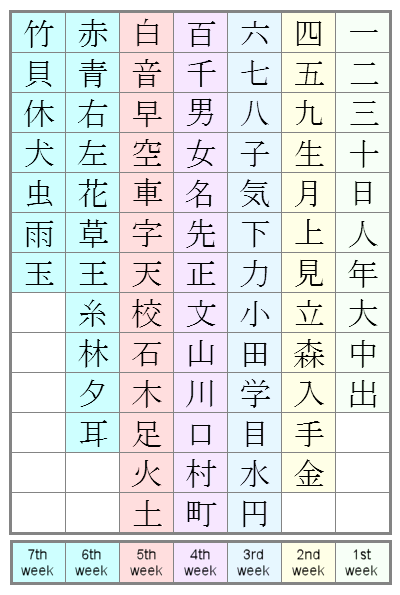漢字 「かんじ」 – kanji
kanji were adopted from China and later adapted for use in written Japanese. Because Japanese grammar is structured differently from Chinese grammar, the kanji were modified with the addition of hiragana to indicate particles and verb endings. Called okurigana, they are suffixes following kanji stems in written words. They serve to inflect adjectives and verbs, and to disambiguate kanji with multiple readings. okurigana are only used with kun'yomi (literally: meaninf reading / Japanese readings). As new kanji were introduced and existing kanji were re-introduced over time, many kanji have multiple readings and meanings. kanji may have on'yomi (literally: sound reading / Chinese readings) and kun'yomi; some kanji have only one or the other reading. kanji may also be accompanied by furigana, a Japanese reading aid consisting of smaller kana (usually hiragana for Japanese words and katakana for foreign words), printed next to the kanji to indicate its pronunciation. In horizontal text, they are placed above the kanji, while in vertical text, they are placed to the right of the kanji.
Japanese school children are expected to learn 1,006 kanji by the end of grade 6, and 2,136 by the end of ninth grade; at which point they are literate enough to read newspapers and most books. High school and then college education requires knowledge of approximately 6,000 kanji. Below are the kanji for Grade One. (Read top to bottom, right to left.)
© 2010-2019 shi-yaku-jin no hokora & BigTime Interactive
shi-yaku-jin no hokora, shiyakujin no hokora, shi-yaku-jin, shiyakujin, minzoku, minkan, folk shinto, folk shintou, Neo-Shinto, NeoShinto, Neoshintou, Shinto, Shintou, Shintoism, kami-no-michi, online shrine, virtual shrine, cyber shrine, shrine, hokora, kanji, japanese, native words, japanese words, kun-yomi, kun'yomi, on-yomi, on'yomi

